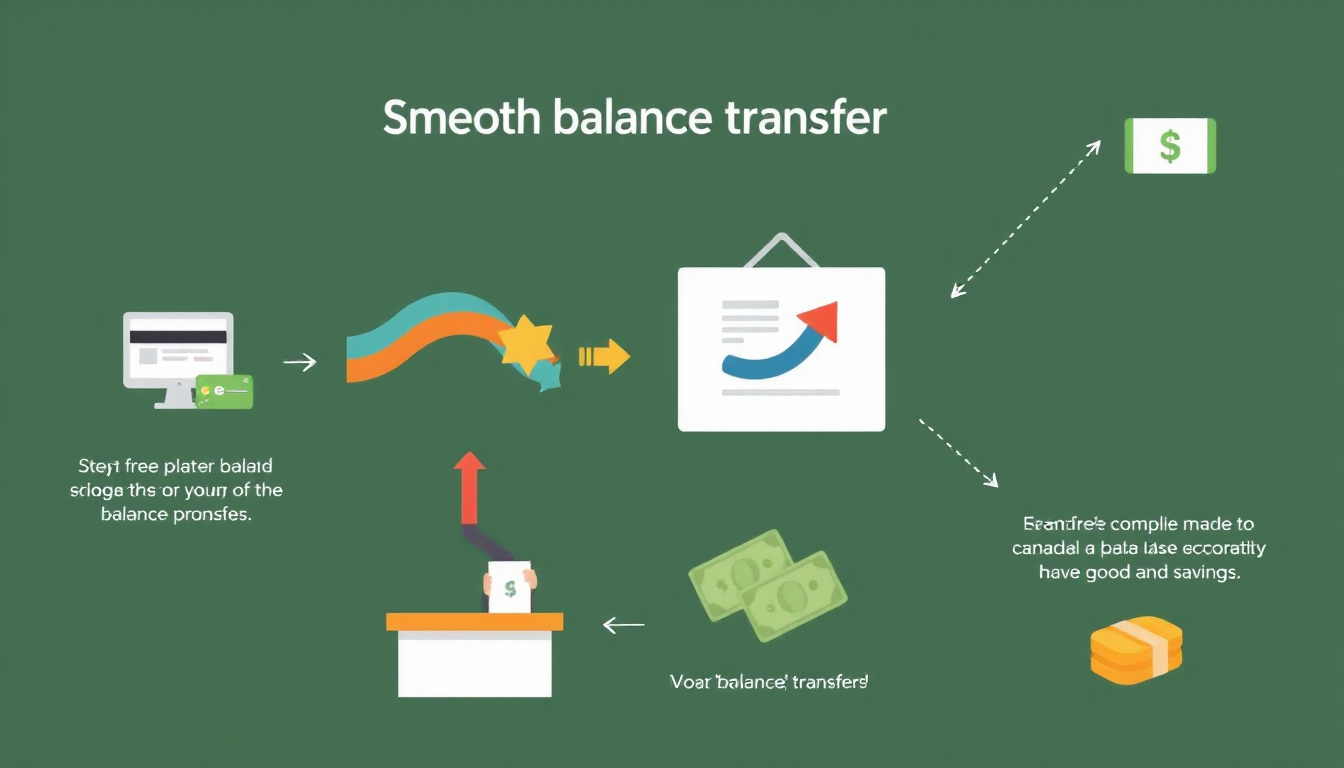Understanding how to manage your finances is crucial, especially when it comes to handling credit card debt. One effective strategy that many Canadians overlook is the balance transfer. In this article, we will delve into the important question: How does a balance transfer work? We’ll explain the fundamentals of balance transfers, explore the benefits for debt management, and outline the steps necessary to successfully execute a balance transfer. Whether you are looking to consolidate debt or reduce interest payments, this comprehensive guide will equip you with the knowledge to make informed financial decisions.

Key Takeaways
- A balance transfer involves moving debt from one credit card to another with a lower interest rate.
- Utilizing balance transfers can significantly reduce overall interest costs and help manage debt more effectively.
- To execute a successful balance transfer, one should compare offers and understand any associated fees.
- Make sure to pay off the transferred balance before the promotional interest rate expires to avoid higher costs.
- Monitor your credit score, as balance transfers can impact your credit utilization ratio.
Understanding Balance Transfers: The Basics
A balance transfer is a financial strategy that allows you to move outstanding debt from one or more credit cards to another credit card, often with a lower interest rate. Many Canadians consider this option when searching for ways to manage their debt more effectively and save on interest payments. So, how does a balance transfer work? Essentially, you apply for a new credit card that offers a promotional balance transfer rate, which is usually lower than your current card’s rate or even 0% for an introductory period. Once approved, you provide the details of your existing debts, and the new credit card issuer pays off those debts directly. This can simplify your payments into one manageable monthly charge and potentially save you money as you pay down your debt. However, it’s essential to read the fine print, as balance transfer fees may apply, and understand when the promotional rate ends to avoid transitioning back to a higher interest rate.
Benefits of Utilizing Balance Transfers for Debt Management
Balance transfers can be an effective strategy for managing and reducing debt. But how does a balance transfer work? Essentially, it involves moving high-interest debt—typically from credit cards—onto a new credit card that offers a lower interest rate or a promotional 0% interest period. The benefits of utilizing balance transfers for debt management include the potential to save on interest payments, which can significantly accelerate your debt repayment. By consolidating multiple balances into one account, you also simplify your financial obligations, making it easier to stay organized and focused on paying down your debt. Additionally, many balance transfer cards come with features such as rewards programs or perks, which can provide added value during your repayment journey. However, it’s crucial to read the fine print, as balance transfer fees may apply and promotional rates eventually expire, leading to higher interest rates if the balance isn’t paid off in time.
‘The only way to do great work is to love what you do.’ – Steve Jobs

Steps to Execute a Successful Balance Transfer
A balance transfer is a strategic financial move that allows you to shift high-interest debt from one or more credit cards to another card with a lower interest rate, often with promotional offers such as 0% APR for a specified duration. To execute a successful balance transfer, start by evaluating your current credit card debt and identifying the total amount you wish to transfer. Next, research credit cards that offer attractive balance transfer deals, paying close attention to the duration of the promotional period and any transfer fees involved. Once you select a card, apply for it and, upon approval, initiate the transfer by providing the necessary details of your existing credit accounts. It’s crucial to check how does a balance transfer work in terms of the timeline for processing and ensure you continue making at least the minimum payments on your old card until the transfer is complete, as this helps you maintain a good credit score. Finally, create a repayment plan for the transferred balance to ensure you pay off your debt before the promotional rate expires, helping you to effectively reduce your financial burden.
